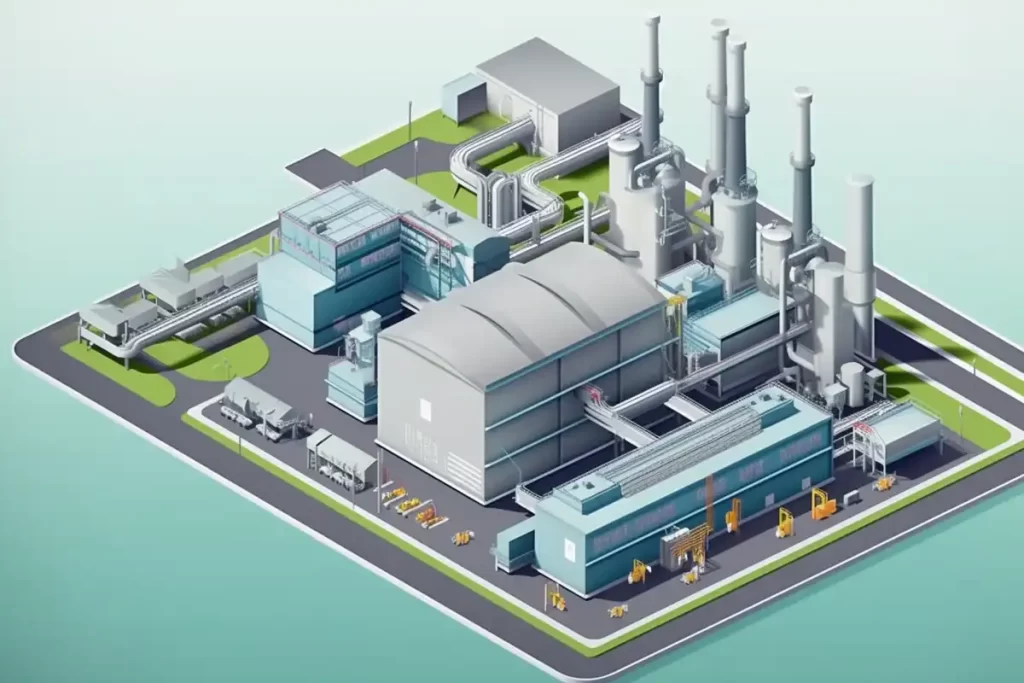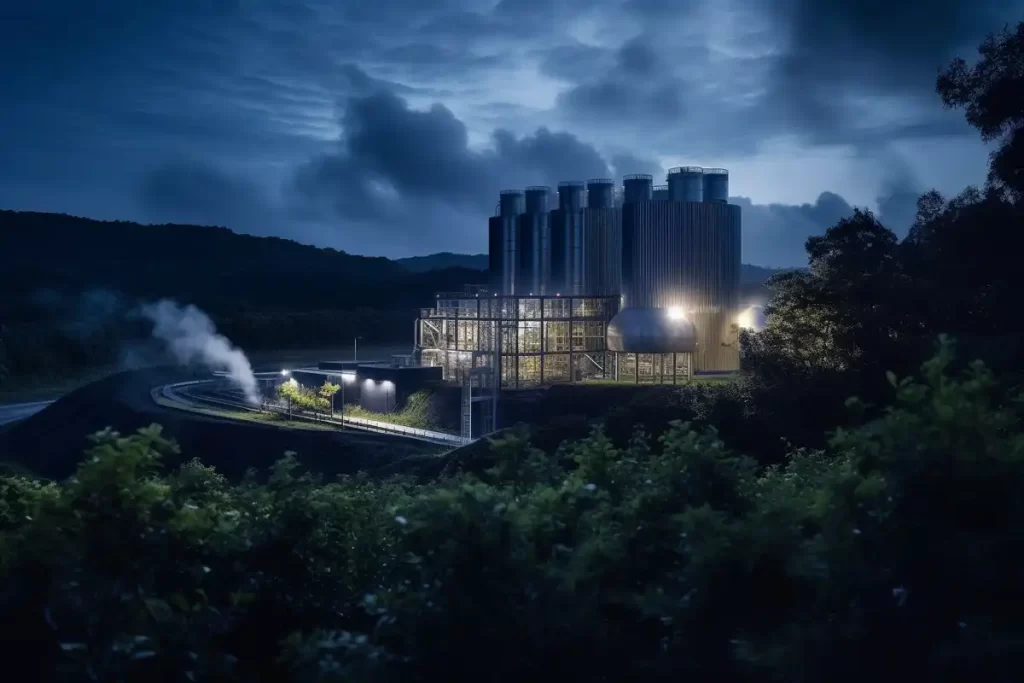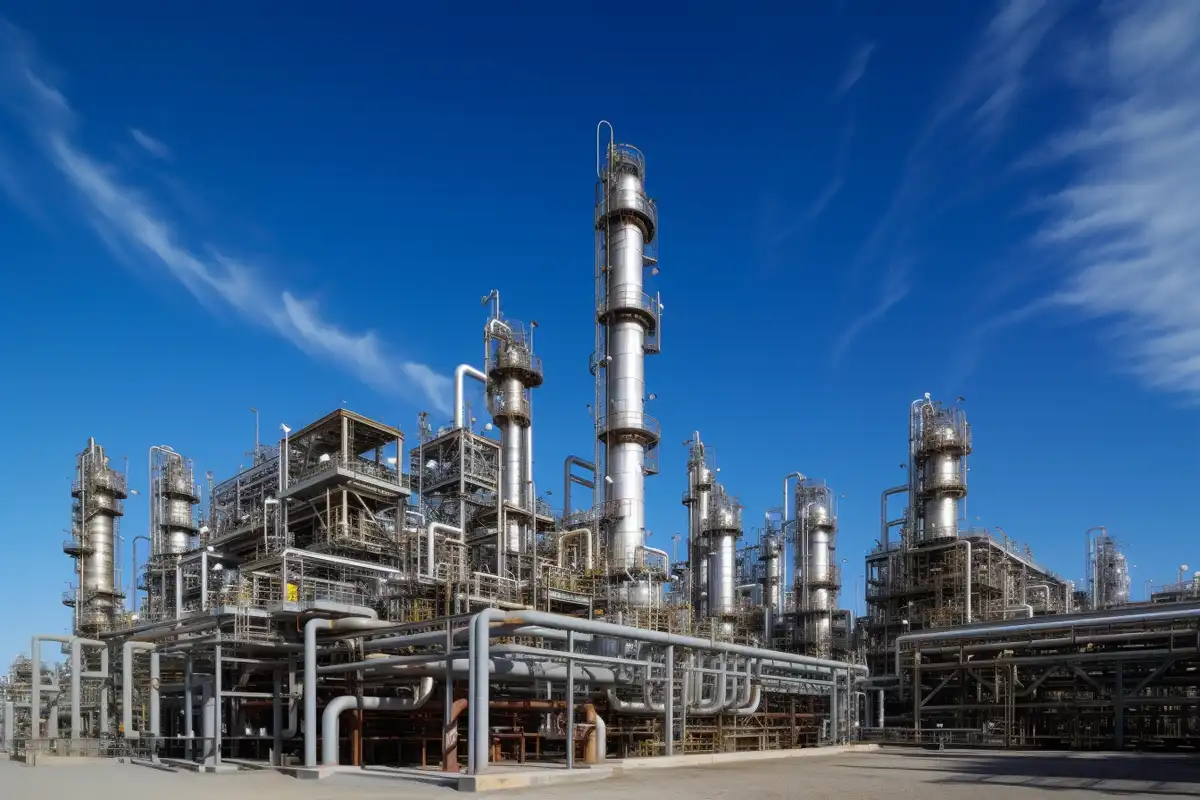As we seek out new ways to tackle the ongoing climate crisis, blue hydrogen production has emerged as a promising solution. Blue hydrogen, a form of hydrogen produced from natural gas, offers significant potential for reducing our carbon footprint, while simultaneously providing a reliable and sustainable energy source. In this article, we’ll take a closer look at the production process and the role that blue hydrogen can play in achieving a greener future.
What is Blue Hydrogen?
Blue hydrogen is a type of hydrogen produced by using steam methane reforming (SMR) or autothermal reforming (ATR) processes to extract hydrogen from natural gas. What sets blue hydrogen apart from other types of hydrogen production is the implementation of carbon capture and storage (CCS) technologies [1]. By capturing and storing the carbon dioxide emissions generated during the production process, blue hydrogen offers a more environmentally friendly alternative to traditional hydrogen production methods.
A Quick Comparison of Hydrogen Colors
Before diving into the details of blue hydrogen production, it’s important to understand the differences between the various “colors” of hydrogen:
- Grey hydrogen: Produced through SMR or ATR processes without CCS, resulting in significant CO2 emissions.
- Blue hydrogen: Produced through SMR or ATR processes with CCS, reducing CO2 emissions.
- Green hydrogen: Produced using renewable energy sources, such as solar, wind, tidal, or hydroelectric power, to split water into hydrogen and oxygen through electrolysis [2].
The Production Process of Blue Hydrogen
The production of blue hydrogen can be broken down into several key steps:
- Steam methane reforming (SMR) or autothermal reforming (ATR): Natural gas, primarily composed of methane (CH4), is combined with steam to create a mixture of hydrogen (H2) and carbon dioxide (CO2). In the ATR process, an additional oxidant is used to generate heat for the reaction.
- Carbon capture and storage (CCS): CO2 generated during the reforming process is captured using advanced technologies, such as amine-based solvents or solid adsorbents, and subsequently compressed for transportation and storage. The stored CO2 can be used for enhanced oil recovery, injected into deep saline aquifers, or used in other industrial applications.
- Hydrogen purification: The hydrogen produced in the reforming process is further purified, typically through pressure swing adsorption (PSA) or membrane separation, to remove any remaining impurities [3].
- Distribution and use: The purified blue hydrogen is then distributed for use in various applications, such as transportation, power generation, and industrial processes.

The Benefits of Blue Hydrogen
Blue hydrogen offers a number of advantages, including:
- Reduced carbon emissions: By incorporating CCS technologies, blue hydrogen production significantly reduces CO2 emissions compared to grey hydrogen production, helping to mitigate climate change impacts [4].
- Energy security: As a domestically available resource, blue hydrogen can contribute to greater energy security and reduce dependency on foreign energy imports.
- Versatility: Hydrogen is a versatile energy carrier, with potential applications in various sectors, including transportation, power generation, and industrial processes [5].
Challenges and Considerations
While blue hydrogen presents numerous benefits, there are also challenges and considerations to be addressed:
- Cost: The costs associated with CCS technologies can make blue hydrogen more expensive than grey hydrogen [6]. However, as CCS technologies advance and economies of scale are achieved, these costs are expected to decrease.
- Infrastructure: Developing the necessary infrastructure for blue hydrogen production, transportation, and use can be a significant undertaking, requiring substantial investment and planning.
- Environmental concerns: While blue hydrogen is more sustainable than grey hydrogen, it is not as clean as green hydrogen, which is produced using renewable energy sources. As a result, it is important to consider the long-term sustainability goals and potential transition towards green hydrogen production.
Real-World Examples of Blue Hydrogen Projects
Despite the challenges, several blue hydrogen projects are already underway, demonstrating the potential of this sustainable energy source:
- Baytown (USA): ExxonMobil is set to build the world’s largest low-carbon hydrogen plant in Baytown, Texas. Producing 1 billion cubic feet of hydrogen daily from natural gas, the facility will capture over 98% of CO2 emissions, with a planned startup in 2027-2028 [7].
- Shanghai Chemical Industry Park (China): SCIPIG, an Air Liquide subsidiary, will invest €200 million+ in building two eco-friendly hydrogen production units at Shanghai Chemical Industry Park, replacing coal-based gasification supply and expanding their current operations [8].
- Mabrouk (Oman): Shell is evaluating the potential for blue hydrogen production from Oman’s Mabrouk field gas reserves. Aiming for an agreement with Oman’s government, the project’s advancement relies on its feasibility. Gas production is anticipated to start in early 2023 [9].
- Acorn Hydrogen (United Kingdom): The Acorn Hydrogen project plans to produce blue hydrogen from North Sea natural gas using ATR and CCS technologies. The captured CO2 will be stored in depleted oil and gas fields in the North Sea, while the hydrogen produced will be used in various applications, including power generation and heating [10].
- Northern Lights (Norway): The Northern Lights project is a collaboration between Equinor, Shell, and Total, focusing on blue hydrogen production using natural gas from the Norwegian Continental Shelf. The project will incorporate CCS technologies, with the captured CO2 being stored in a saline aquifer beneath the North Sea [11].
Comparative Analysis of Blue Hydrogen and Other Alternative Energy Sources
In this section, we’ll provide a comparison between blue hydrogen and other sustainable energy sources, such as green hydrogen, biofuels, and renewable electricity. The comparison will focus on factors such as cost, availability, scalability, and environmental impact.
Blue Hydrogen
- Cost: Blue hydrogen production is currently more affordable than green hydrogen, but more expensive than grey hydrogen due to the implementation of CCS technologies.
- Availability: Blue hydrogen relies on natural gas, a finite fossil fuel, for its production, making it a non-renewable energy source.
- Scalability: As CCS technologies advance and economies of scale are achieved, blue hydrogen production could become more scalable and cost-competitive.
- Environmental impact: Blue hydrogen production reduces CO2 emissions compared to grey hydrogen, but it is not as clean as green hydrogen or renewable electricity.

Green Hydrogen
- Cost: Green hydrogen production is currently more expensive than blue hydrogen due to the costs associated with electrolysis and renewable energy generation [12].
- Availability: Green hydrogen is produced using renewable energy sources, making it a renewable and sustainable energy option.
- Scalability: As renewable energy technologies continue to advance and costs decrease, green hydrogen production could become more scalable and cost-competitive.
- Environmental impact: Green hydrogen production has the lowest environmental impact among the options discussed, as it relies on renewable energy and emits no CO2 during production.
Biofuels
- Cost: The production costs for biofuels vary depending on feedstock and processing technology but can be competitive with fossil fuels in some cases [13].
- Availability: Biofuels are produced from renewable biomass resources, such as plants, algae, and waste materials, making them a renewable energy source.
- Scalability: Some biofuels, particularly advanced biofuels, have significant scalability potential, while others may face limitations due to feedstock availability or land-use constraints [14].
- Environmental impact: The environmental impact of biofuels depends on factors such as feedstock, production methods, and land-use changes. Some biofuels can significantly reduce greenhouse gas emissions compared to fossil fuels, while others may have a smaller or even negative impact.
Renewable Electricity
- Cost: The costs of renewable electricity generation have decreased significantly in recent years, making it increasingly cost-competitive with fossil fuel-based electricity.
- Availability: Renewable electricity is generated from renewable energy sources, such as solar, wind, and hydropower, making it a sustainable and environmentally friendly option.
- Scalability: Renewable electricity generation technologies, such as solar panels and wind turbines, have demonstrated excellent scalability potential as their costs continue to decrease.
- Environmental impact: Renewable electricity generation has minimal environmental impact, as it relies on clean energy sources and produces no direct CO2 emissions.
| Energy Source | Cost | Availability | Scalability | Environmental Impact |
|---|---|---|---|---|
| Blue Hydrogen | Moderate | Finite | Moderate | Moderate |
| Green Hydrogen | Currently High | Renewable | Improving | Low |
| Biofuels | Variable | Renewable | Variable | Variable |
| Renewable Energy | Increasingly Low | Renewable | High | Low |
In conclusion, blue hydrogen offers a more sustainable alternative to grey hydrogen production, but it is not as environmentally friendly as green hydrogen or renewable electricity. As we transition towards a greener future, it is essential to continue exploring and investing in a diverse range of alternative energy sources to maximize their potential and minimize their environmental impact.
Frequently Asked Questions
How is blue hydrogen produced?
A: Blue hydrogen is produced by using steam methane reforming (SMR) or autothermal reforming (ATR) processes to extract hydrogen from natural gas. Carbon capture and storage (CCS) technologies are implemented during the production process to capture and store CO2 emissions, making blue hydrogen more environmentally friendly than traditional hydrogen production methods.
Is blue hydrogen a renewable energy?
A: Blue hydrogen is not considered a renewable energy source, as it relies on natural gas, a finite fossil fuel, for its production. However, it is more environmentally friendly than grey hydrogen, due to the incorporation of CCS technologies. Green hydrogen, produced using renewable energy sources through electrolysis, is considered a renewable energy source.
What are the disadvantages of blue hydrogen?
A: Some disadvantages of blue hydrogen include higher production costs due to the implementation of CCS technologies, the need for significant investment in infrastructure for production, transportation, and use, and potential environmental concerns, as it is not as clean as green hydrogen, which is produced using renewable energy sources.
Is blue hydrogen better than natural gas?
A: Blue hydrogen offers certain advantages over natural gas, particularly in terms of reduced carbon emissions. By incorporating CCS technologies, blue hydrogen production significantly reduces CO2 emissions compared to natural gas combustion. Additionally, hydrogen is a versatile energy carrier with a wide range of applications across various sectors.
Is blue hydrogen cheaper than green hydrogen?
A: Currently, blue hydrogen is generally cheaper to produce than green hydrogen, as the production processes for green hydrogen, such as electrolysis, are still relatively expensive. However, as renewable energy technologies continue to advance and costs decrease, green hydrogen production costs are expected to become more competitive, potentially making green hydrogen a more cost-effective option in the future.

